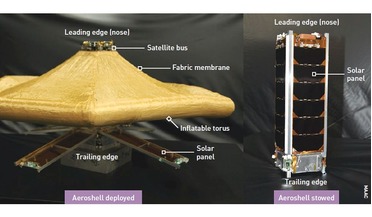 May 2019
Unlocking the full potential of Earth observation
May 2019
Unlocking the full potential of Earth observation
... their true potential, satellites are in critical need of a high-speed data connection. One day, humans could be an interplanetary species colonising the distant planets seen by the James Webb Space Telescope. Until that day, we will...
 June 2019
The challenge of planetary protection
June 2019
The challenge of planetary protection
... be protected from the potential hazard posed by extraterrestrial matter carried by a spacecraft returning from an interplanetary mission. Therefore, for certain space mission/target planet combinations, requirements to control terrestrial biological...
 July 2019
Science and sensation in microgravity
July 2019
Science and sensation in microgravity
... parabolic flight campaign opening the way for surgical care during long-term space missions, such as interplanetary human spaceflight. Parabolic manoeuvres A solid object launched in a vacuum with an initial velocity will describe a parabola...
 July 2019
Settling the final frontier
July 2019
Settling the final frontier
... has written extensively for NASA’s Jet Propulsion Laboratory and Caltech. His books published in 2019 include Interplanetary Robots, Space 2.0, and First on the Moon. This article is based on an extract from Space 2.0 by Rod Pyle, with...
 February 2020
Aeroshells – from LEO to Mars
February 2020
Aeroshells – from LEO to Mars
... technology that might be suitable for an ISS down-mass capability. Aeroshells also have potential for easier interplanetary transportation in that ‘aerobraking’ could be used to slow a spacecraft down as it enters the atmosphere of its target planet...
 April 2020
Protecting against the dangers of space radiation
April 2020
Protecting against the dangers of space radiation
...a continuous flux it can be critically hazardous and currently we don’t have a complete solution for stopping it. The interplanetary space environment showing the toxic combination of galactic cosmic radiation (GCR) and (largely) proton radiation due...